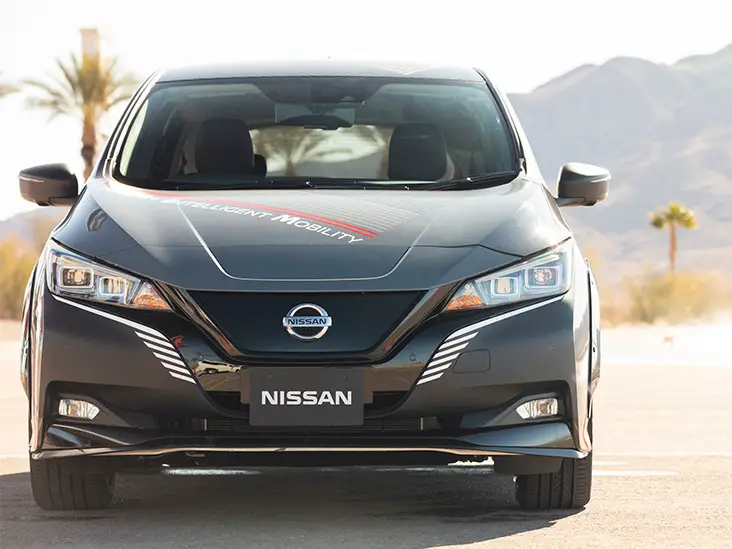The Nissan Leaf is one of the best-selling electric vehicles on the planet. But since it was introduced in 2010, a lot has changed. The EV landscape isn’t as stodgy as it used to be. Buyers are seeking range, engaging drive dynamics, and assured footing. New technology from Nissan, called e-4ORCE, raises the bar for the automaker on much of what the modern EV audience is seeking.
How does it work? Which vehicles will it be applied to? When is it coming to market? Scroll down to learn everything you need to know about Nissan e-4ORCE.
Learn more about the system by watching the video below from Nissan.
Nissan’s e-4ORCE technology: enhancing EV driving performance
www.youtube.com
It’s pronounced “force”.
Nissan says that they choose the moniker because “4” represents driving that is powered by all four wheels.
The technology is basically electronic all-wheel drive.
Photo courtesy of Nissan North America
All-wheel drive and four-wheel drive aren’t the same thing, despite their names giving you the impression that they likely are. All-wheel drive is optimized for on-road use while four-wheel drive is designed to take on more challenging drive situations in addition to driving on the street.
It consists of not one, but two electric motors.
Until now, Nissan EVs have all used a single electric motor, typically for front-wheel drive. This new system uses two electric motors.
It delivers “instant torque” but it’s not like Tesla’s Ludacrous mode.
Nissan claims that the car’s system allows for each wheel to receive “instant torque”. This isn’t unusual with electric vehicles.
The company says that the system will strike a, “balance between powerful performance and unprecedented control – delivering excitement at the push of the accelerator while still ensuring comfort for everyone in the car.” In other words, don’t expect to be thrown back in your seat.
Nissan relays that where the technology shines isn’t when moving off the line, but rather when the driver has to react to an obstacle in the road. That’s when, Nissan says, “The system manages and conveys the driver’s intentions and expectations smoothly and efficiently.” That reaction by the car to humans input is three times faster than the blink of an eye.
The system defaults to a 50-50 distribution.
Photo courtesy of Nissan North America
In traditional driving circumstances, the system defaults to a 50-50 power split between the car’s front and rear wheels. But, when needed, the system can distribute up to 100 percent of the power to either the front or the back.
It can recapture energy through regenerative braking.
Regenerative braking is important part of maximizing electric vehicle range. The e-4ORCE system is able to manage braking to each wheel, including the ability to take advantage of regenerative braking technology to slow the vehicle. The two technologies are designed to work together to reduce the vehicle’s pitch and dive.
The system isn’t just about grip.
E-4ORCE is able to stabilize the car while it’s moving power to the appropriate wheels. This means that the car shouldn’t lean as much as a traditional vehicle when drivers quickly maneuver around obstacles.
We’ve already seen it in action.
Nissan brought the technology, while it was in development, to the 2019 Tokyo Motor Show and CES.
It’s coming in the Ariya.
Photo courtesy of Nissan North America
The Ariya will be Nissan’s all-electric SUV. It was teased first as a concept car then last week as one of Nissan’s 12 forthcoming models in the next 18 months.








